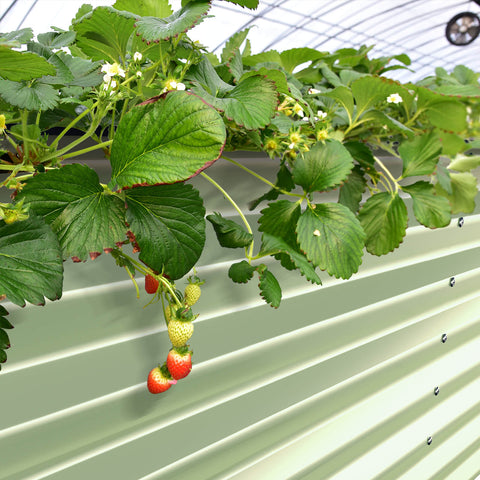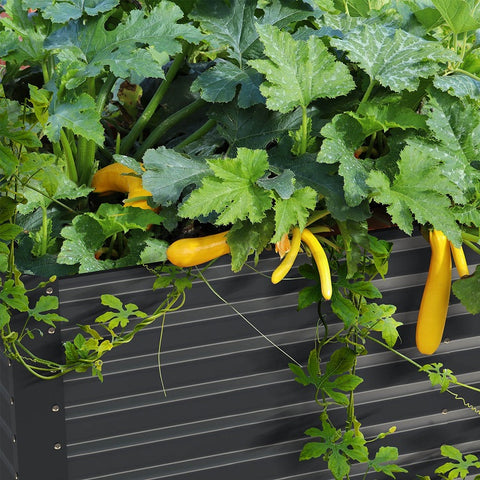Yes, you can put plants or seeds on the ground and enjoy at least some success in the garden. However, if you plant high-yield vegetables in a planned way from the beginning, you will get the most return. The type of garden bed you use, the plants you buy, and the spacing of plants will all have an impact. Here are our best tips on how to increase vegetable production in your garden bed.The following content also has some reference value for raised garden beds.
Tip # 1 Choose the right material for your garden bed
You will enjoy higher fruit and vegetable yields and deeper garden beds. Not all plants have natural deep roots, but those that do benefit from deeper roots. Roots that can grow in deep layers can better fix plants. They grow more roots, which enables plants to absorb nutrients more effectively. Moreover, deeper roots help plants better resist drought. A deeper convex bed can also drain water better.
Tip # 2 Choose high-yield vegetables
There are many high-yielding vegetables in the small garden. If you want to harvest the most agricultural products per square foot, choose those vegetables with high yield. Especially cherry and grape tomato varieties will produce the most tomatoes. You will also get more medium-sized tomatoes than the largest variety. Brewing cucumber will produce a lot of fruit, especially if you often pick it. In addition, if you continue to pick, zucchini and other pumpkins will continue to come. Shrub beans are productive producers. Believe it or not, planting okra can help you maximize yield. Okra grows wildly in the hot summer. Ask them in your nursery for their suggestions for high-yield producers, and provide high-yield vegetables for the small garden in your gardening area.
Skill # 3 Design a high-yield vegetable garden plan
Elevated beds help maximize garden space because you don't have to occupy the space of the sidewalk. Plants planted in square or rows may look neat, but they are inefficient in using space. Instead, arrange the plants into triangles. By doing so, you will be able to plant more plants in the same space. But don't squeeze them! Another thing to consider is sunshine. Plant tall plants where other plants will not be covered. On the other hand, planting tender crops such as lettuce under the shade of higher plants can make the yield of lettuce slightly longer. Generally speaking, tall crops should be planted on the north side of the garden, while short crops should be planted on the south side.
Tip 4: Use good soil
If you can't make rich compost and soil yourself, find the best soil to grow vegetables. Experts agreed that the most healthy roots can be produced because of the deep soil, rich organic nutrition and loose structure. You can enrich the soil with compost and organic matter (such as compost leaves). Make or buy the highest quality compost. The richer the compost, the more nutrients the plant can obtain. The large amount of nutrients your soil needs are obvious - N, P and K. In addition, the best soil you can buy for the garden should also contain micronutrients and minerals, such as sulfur, manganese, iron, copper, zinc, carbon, magnesium, calcium, boron and iodine.
Tip # 5 Implement continuous planting
Create a map or timeline that shows when you will pull it out and what you will replace it with. Continuous planting may mean more than one thing. Plant a variety of fast-growing crops, such as radish. Another way to implement continuous planting is to select the same crop variety with different maturity periods - for example, super early maturing tomato, then late maturing tomato. In the same space, you can plant lettuce in spring, a kind of precocious tomato, and then plant cabbage as a winter crop. Planting between radish seeds and carrot seeds. Radishes are usually harvested in five weeks, while carrots take about seven weeks. These strategies are easy to implement for high-yield vegetable garden planning.
conclusion
No one will open a garden and say, "I hope I can only get two green peppers like this, and a handful of tomatoes will do." No! If you plan to install a movable bed that can last for several years and put it into the garden, you need to produce as much as possible. Gardening is sometimes tricky, which is for sure. But some basic strategies about what plants you buy and where you put them are undoubtedly effective ways to improve vegetable production.









